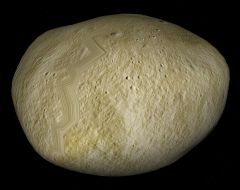| Hydra
|

|
| Hydra from Pluto and Moons.zip and New Horizons Pluto Encounter.zip in Orbiter 2016 with D3D9
|
| Designation
|
| Name |
Hydra
|
| Reference body |
134340 Pluto
|
| Number of satellites |
|
| Planetary mean orbits
|
| Epoch |
2002.88980151
|
| Semimajor axis (a) |
64780350.2435684 m
|
| Eccentricity (e) |
0.00527055475115776
|
| Inclination (i) |
0.249324421879577°
(0.00435153206743 radian)
|
| Longitude of the ascending node (LAN, ☊) |
30.4138815781564°
(0.530822371850478 radian)
|
| Longitude of periapsis (ϖ) |
336.913168368482°
(5.880244081356023 radian)
|
| Mean longitude (L) |
99.523168368531°
(1.73700697004754 radian)
|
| Selected physical parameters
|
| Mean radius |
64835.3502435684 m
|
| Mass |
1.25578958899498×1020 kg
|
| Sidereal rotation period |
3510404.90311891104 sec (40.6297 hours)
|
| SidRotOffset |
0
|
| Obliquity |
96.145° (1.67804680932995 radian)
|
| LAN |
43.046° (0.7512944298135 radian)
|
| Note |
*Elements given are from Hyra.cfg (PlutoandMoons.zip)
|
Hydra is the second largest natural satellite of Pluto after Charon. It was discovered in images by the Hubble Space Telescope in May 2005 and was named after Hydra, the nine-headed serpent in Greek mythology.
Hydra in Orbiter[edit]
Hydra was introduced to Orbiter with the release of Nix-Hydra.zip in August 2009.
Gallery[edit]
Hydra from Nix-Hydra.zip in Orbiter 2006P1
Hydra from PlutoandMoons.zip in Orbiter 2006P1
Hydra from Pluto and Moons.zip and New Horizons Pluto Encounter.zip in Orbiter 2016 with D3D9
Image of Hydra from the New Horizons spacecraft taken July 2015
from Wikimedia Commons
Pluto and three satellites taken by Hubble
from Wikimedia Commons in 2005
Animation of the moons of Pluto (Pluto white, Charon blue, Styx green, Nix magenta, Kerberos cyan, Hydra red)
from Wikimedia Commons







